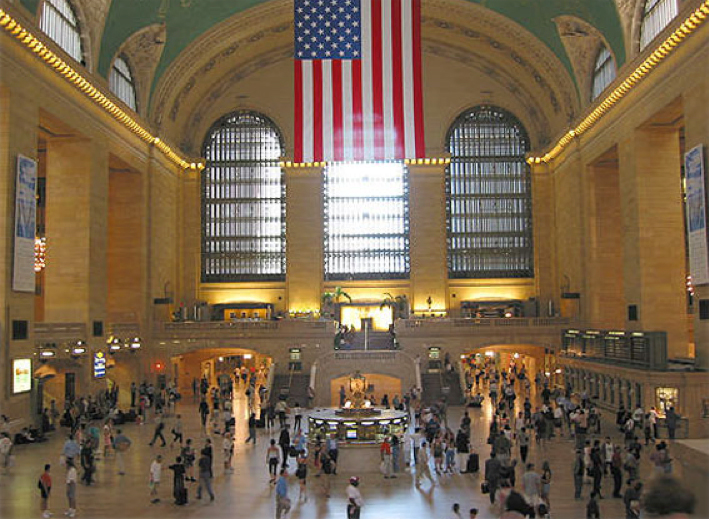

But the federal government, who partially funded the project, directed New York State to first expand and modernize Grand Central – which had just been saved from demolition and designated a historic landmark, before construction of the Third Avenue Terminal could proceed. Residents of the Turtle Bay neighborhood opposed the new transportation center, forcing the MTA to study alternatives, including moving it to Grand Central. This made the Third Avenue location ideal due to its numerous connections for LIRR passengers to Lexington, Flushing and Second Avenue subway lines, Grand Central Terminal, bus lines, taxis, and parking. The ‘69 expansion plan also included a proposal for constructing the Second Avenue Subway, which would have provided subway connections to the LIRR terminal. While construction on the tunnel progressed, the MTA continued planning the Third Avenue LIRR terminal, dubbed the Metropolitan Transportation Center, which they estimated would cost $341 million. With funding secured, construction on began in October 1969. The tunnel’s top level would be used by the IND 63rd Street subway line (today’s F and Q) and the bottom for the new LIRR East Midtown connection. The proposal called for a double-decked tunnel a four-track immersed tube under the East River and Roosevelt Island. In 1969, the MTA’s ambitious transit expansion program included an LIRR East Midtown connection, via a new East River tunnel at 63rd Street connecting to a terminal on Third Ave and 48th Street with an office tower on top.

The LIRR was fortunate to separate from PRR, as just three years later, rival railroads PRR and NYCRR declared bankruptcy and merged in 1968 to form Penn Central, which would also fail less than three years later. During this time, PRR stopped subsidizing the unprofitable Long Island branch, which was then purchased by New York State under the control of the newly established Metropolitan Commuter Transportation Authority (today’s MTA) in 1965. In the postwar decades, a number of factors including automobile-centered planning and over-regulation of the railroad industry led to the decline of many of the great railroads around the country. Grand Central would have been a better location for Long Island commuters due to its location on the east side of Manhattan, where more jobs were located, but competition between PRR and NYCRR eliminated any opportunity for direct access for LIRR commuters to the east side of Manhattan over the next several decades. and Park Avenue, opened their new Beaux-Arts Grand Central Terminal in 1913. To the east, the New York Central Railroad (NYCRR), which had operated two previous railroad facilities at 42nd St. The station was built on the west side of Manhattan to serve as a hub for trains traveling into Manhattan from New Jersey via the newly constructed Hudson River tubes that linked to the PRR network. LIRR service first came to Manhattan in 1910 when the Pennsylvania Railroad (PRR), who owned the LIRR, opened Pennsylvania Station on Seventh Avenue between 31st and 33rd Streets. In the 19th Century, LIRR trains bound for Manhattan terminated in Long Island City, Queens, where passengers would board ferries across the East River to 34th Street in Manhattan.


 0 kommentar(er)
0 kommentar(er)
